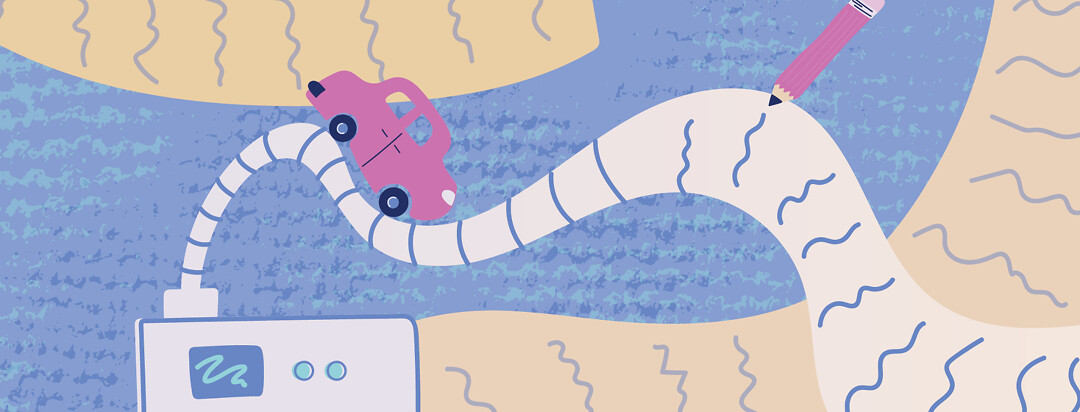Things to Consider When Traveling with a CPAP
It’s been some time since I have traveled anywhere with an overnight stay. You see, I have severe allergies, chronic obstructive pulmonary disease (COPD), pulmonary hypertension, and numerous other health issues.
Smells and scents that people wear or clean with can affect my breathing. Foods...I don’t even want to go there. Some things trigger allergic reactions, and my eyes swell shut, or I break out in hives – oh, how my scalp can itch. I can get so tired that I just want to sleep. Some things can cause anaphylaxis. Flowers...I’m so appreciative, but please re-gift them. Allergies! My husband hasn’t been able to buy me flowers for quite a few years.
Traveling can be a real pain
Different beds can throw my back into spasms. Actually, a car ride can do that, too. Plus, with travel and long walks (and even moderate ones, my whole body goes through various types of pain. You see, I have osteoarthritis and fibromyalgia too. I also have obstructive sleep apnea.
With all of this, it only makes sense that I have a CPAP machine! Whew, I’ve thrown a whole bunch of things at you, and you are probably wondering what any of this has to do with "traveling with a CPAP."
Trips require preparation
My lists and preparations are what helps me get out and through the door. There is always that knowledge of what I can do and absolutely cannot do. There is always the excitement of planning and of doing what we plan. My husband and I have learned that day trips are best for us.
I will often take the CPAP along, even on a day trip. Just in case I need it. Severe allergies can also prove a need. Yes, I will often bring my nebulizer in case of those, too.
My CPAP keeps my airway open when I sleep
If you know what sleep apnea is, you likely know what a CPAP is. The CPAP comes in many styles and sizes. It comes with adjustable settings as well. For those who have dryness inside the nose or in the mouth, you can get a humidifier. Let your doctor order one for you unless you order directly from your health care supplier.
Because of my sleep apnea, I stop breathing for short periods of time. When relaxed and sleeping, the soft tissue, including the tongue, relaxes and blocks my airway. I am overweight. I also take medications that can affect my sleep. If I don’t wake up to breathe, the narrowed airway gets blocked. Yet, some might not wake up, and some may end up having a heart attack.
Keeping my CPAP clean
Since I use the CPAP, it’s so important that I keep it clean and free of bacteria. You should clean the hose and tray, as well as the mask. This can be done with soap and water or with a machine made to clean CPAPs. For the mask, you can wash it with soap and water or vinegar. You can also purchase CPAP wipes that are so convenient and made just for the CPAP.
Don’t do silly things like I did and run the mask through a machine. They are not made for that, and the mask can become unusable. Yes, tried and true. It was a new cushion that I ruined.
The humidifier should be washed and rinsed with vinegar. Be sure to use distilled water in the humidifier. Remember to change your filters monthly.
My CPAP packing list
So, what does this have to do with traveling with a CPAP? A lot!
My pulmonologist has required that anytime I have surgery, or if any anesthesia is used, I have my CPAP with me and use it. My GP, or general practitioner, also requires this. My oral surgeon does too. Anytime we travel, here is my CPAP travel list:
- CPAP case
- CPAP machine
- Power cord for CPAP (they are easily missed/forgotten)
- CPAP filter
- CPAP humidifier
- Electric plug-in adapter to put in hole for cigarette lighter
- Distilled water
- Vinegar
- CPAP wipes
- Tubing
- Spare headpiece from a previous time, so that you can replace parts if needed. I always keep a spare.
- Oxygen concentrator (if on oxygen)
- Name, phone number, and address for supplier where you are going – just in case there are problems.
- Make sure that you have a space to place your CPAP, such as nightstand or chair.
Where have I traveled with my CPAP?
- I was in a camper 4 times.
- When my parents were alive, I traveled at least monthly to see them and had a bedroom set aside just for me.
- Motel when at Mayo Clinic.
- Hospital for total knee replacement.
Final thoughts on traveling with my CPAP
Traveling with a CPAP isn’t too difficult if you make a list and review it one final time when packing or organizing. My mom's bed was nice and comfortable. Traveling always leaves me in pain. Traveling to me means the drive, the whole trip. I don't think that I have ever regretted the trip.
No, those masks aren't good-looking, nor are they appealing. A person might not realize its whole purpose, yet they have been known to save lives. I relish the trips. We are building memories along the way.

Join the conversation